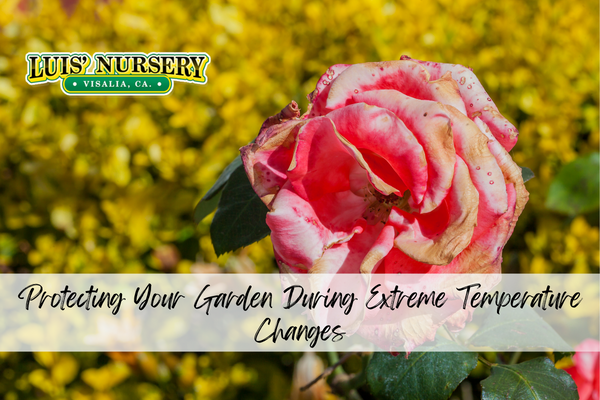Climate change has affected all of us, especially as gardeners. Crazy weather has become the norm and affects most parts of the world. Even when Meteorologists attempt to forecast conditions, strange weather patterns interrupt randomly. Plants are exposed to weather that is too cold, too hot, too windy, drying conditions, flooding and more that can cause them to suffer. Native plants have an easier time, but they still can find these temperature fluctuations challenging. Extreme temperatures can shock plants, but if you choose the right varieties, they can survive the changes.
How do weather conditions affect our plants?
The weather influences the growth, production and overall health of our gardens. If temperature changes are drastic and quick your plants will experience stress. Late frosts can kill fruit tree buds and newly planted annuals. When it is too hot your plants can dry out and wilt. The leaves scorch which prevents them from receiving adequate nutrition from the soil.
Some plants, such as succulents are well equipped for handling heat by conserving water in their fleshy leaves. The majority of plants don’t have this luxury and you’ll see heat stress in wilting, crunchy brown or yellowing leaves. If you notice your plants dropping its blossoms or leaves, it’s usually a sign it’s attempting to conserve water.
How can we help our plants?
It’s important to keep an eye on the weather forecast and giving yourself a leg up by choosing plants that are hardy enough for your planting zone. It’s also important to remember that our zones are affected by soil type, microclimates, moisture levels, wind and other things, but choosing plants that are hardy for your zone is an important start.
If you live in an area with hard freezes, it’s important to water the plant roots to protect them, and keep the plant covered with some frost protecting materials. You can place sensitive plants in areas that are protected from the wind and stays warmer.
When faced with extreme heat it’s important to protect your plants from drying out. Frequent and deep watering is vital. Make sure that you irrigate from under the leaves and that will keep the moisture in the roots. If you notice your leaves are singing you can use a shade cloth. Mulch placed around the roots of your plants will also help them to keep cool and moist. Sensitive plants should be kept out of the hottest sites in your garden in order to give them the best shot of survival.
Container plants will require daily watering and sometimes twice a day during high temperatures, they should be soaked until water is coming out of drainage holes. Potted plants that can be moved to shadier locations during the heat of the day can help with their survival.
Keeping these tips in mind can help your plants to be successful despite the challenging temperature variations. If you have any questions about gardening in the Visalia, San Joaquin and Central Valley, we would be happy to help!



